
The Magar, also spelled as Mangar, and Mongar, are the third largest ethnolinguistic groups of Nepal representing 7.1% of Nepal's total population according to the Nepal census of 2011.

Magar Kham, also known as Kham, Kham Magar, and Khamkura, is the Sino-Tibetan language variety of the Northern Magar people of Nepal. The language is situated in the upper elevations of Baglung, East Rukum, and Rolpa districts. Based on census data taken in 2011, the total population of Magar Kham is estimated to be about 69,000 speakers.
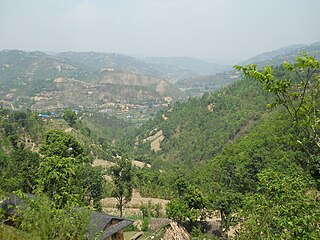
Arghakhanchi is one of the districts of Lumbini Province in Nepal. The district headquarter is Sandhikharka. The district covers an area of 1,193 km2 (461 sq mi) and has a population (2011) of 197,632. Its neighboring districts are Palpa in the east, Gulmi in the north, Kapilvastu District in the south and Pyuthan in the west.

Syangja District, a part of Gandaki Province, is one of the seventy-seven districts of Nepal. The district, with Syangja bazaar as its district headquarters, covers an area of 1,164 km2 (449 sq mi) and had a population of 289,148 It lies in the hilly region at an altitude ranging from about 300 meters along the banks of Kaligandaki river up to a couple of thousands meters above the sea level. It lies at about latitude 28°4'60 North and longitude 83°52'0 East.
The Kham Magars, also known in scholarship as the Northern Magars, are a Tibeto-Burman language-speaking indigenous ethnic tribal community native to Nepal. In general, Kham Magars refer to themselves using their clan name and the ethnic identity of Magar. Kham Magar clan names include Budha, Gharti, Pun, and Rokha. The language of the Kham Magars is call Magar Kham among other glottonyms. It is estimated that about 71,000 Kham Magars live in the Middle Hills of mid-western Nepal, in the districts of Rukum, Rolpa, and Baglung. Scattered communities also live in Jajarkot, Dailekh, Kalikot, Achham, and Doti districts as well as in the capital city of Kathmandu.
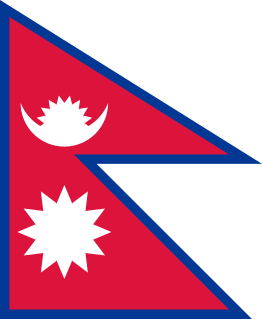
Nepal competed at the 1996 Summer Olympics in Atlanta, United States.
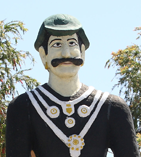
Thapa (; is the surname commonly used by North Indian and Nepali people belonging to the Chhetri caste of the Khas group and Magar group, a Sino-Tibetan speaking ethnicity.
Sukhaura is administered under Bareng Rural Municipality of Baglung District of Gandaki Province. Sukhaura is located in the south-eastern part of Baglung District bordering Gulmi District in the South. Sukhaura is rich in forest resources. A large area of the village is occupied by the thick forest. Some forest areas are preserved under community efforts. Sukhaura is surrounded by Salyan in the east, Galkot in the north and the west and Chandrakot, Gulmi in the south. Sukhaura is also characterised as one of the politically conscious villages of the district. It is mainly inhabitated by the magar and the kshetri communities. Nepali is the lingua-franca. People are mostly Hindus. Sukhaura is well-connected with transportation, electricity and communication networks. Water supply is now adequately accessible to each house. There is full-equipped educational facility up to +2 level in Sukhaura. Sukhaura's main economy is based on agriculture and animal husbandry. Maize, millet, barley, wheat, buckwheat and potato are main cereals produced in the village. Some notable places are Majhgaun, Dhampu, Pancheuli, Vitriban, Bahundada etc. The village is rapidly modernising in recent times.
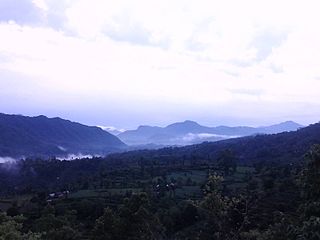
Mirkot is a village development committee in Gorkha District in the Gandaki Zone of northern-central Nepal. It is also known as Bhirkot, Gorkha. It lies on the western side of the headquarters of Gorkha. According to the National Population and Housing Census 2011, it had a population of 5261, and had 1388 households in the village. Its neighbourhood VDCs are Gaikhur, Dhuwakot, Khoplang, Chyangli, Palumtar, Chhoprak and Deurali. Such as Kotgadi, Lakang, Mahadev Temple are the most important places of Mirkot. The central part of Mirkot VDC is called Bagdanda, Where the main office of the VDC and Mirkot Higher Secondary School are located.
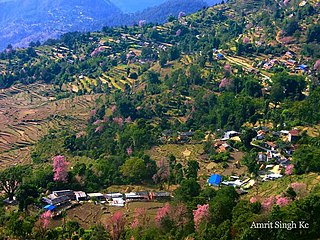
Salyan is a town and Village Development Committee in Kaski District in the Gandaki Zone of northern-central Nepal. At the time of the 1991 Nepal census it had a population of 3,254 persons living in 665 individual households.

The Mid-Western Development Region was one of the largest and formerly one of Nepal's five development regions. Westward from the Central region surrounding Kathmandu were the Western, Mid-Western and finally Far-Western regions. Counter-intuitively, Mid-Western lay west of Western.
Siluwa is a village development committee in Palpa District in the Lumbini Zone of southern Nepal. At the time of the 1991 Nepal census, it had a population of 4616 people living in 827 individual households. Villages within it include Romandi. Maslang is one of the main village ward no 1 which is mostly occupied by Ale magar Thar people you can find the Rana magar and masrangi magar aswel, one of the old school shree janamarga higher secondary school also in Maslang
and in siluwa, it coveres Darsing bhanjyang, Hatiya, and siluwa, all cast Bhahun, Magar, Newar, Darji, and Biswakarma people leaving in siluwa, Mandali baraju world famous temple also there in Siluwa ..
Devchuli is a municipality in Nawalpur District in the Lumbini Zone of southern Nepal. At the time of the 2011 Nepal census it had a population of 42,603 people living in 916 individual households. The municipality was established on 18 May 2014 by merging the preexisting Devchuli, Dibyapuri, Pragatinagar VDCs and later Rajahar VDC. The Narayani River flows in the vicinity. Northern side of the municipality is covered by hills with major population of ethnic Magar people and their culture. Northern areas are also least developed, rural and lack basic infrastructures, such as roads, hospitals and clean drinking water supply. Southern plain areas are developing and has major concentration of population. Municipality has great ethnic and cultural diversity, made of indigenous Tharu, Magar and all other major ethnic groups and culture residing harmoniously.

Maruni is a Nepalese folk dance of the Magar community. Alongside Nepal, it is popular in Nepalese diasporic communities of Darjeeling, Assam, Sikkim, Bhutan and Myanmar. It is one of the oldest and most famous dance of the Nepalese community residing in these regions, originally danced as part of Dashain and Tihar festival. Dressed colorfully with rich ornaments, the dancers dance to commemorate "the victory of good over evil", accompanied by the traditional Nepali Naumati Baja orchestra.

Sourp Magar is an Armenian monastery located in a forested valley in the Pentadaktylos range in Cyprus. It is de facto located in Northern Cyprus. The Magaravank stands at 530 metres and is about 3 km from the Halevga Forest Station. In addition to its historical interest as a centre of Armenian culture, Sourp Magar is noted for its picturesque location and distant views of the Mediterranean and the mountains in Anatolia. The monastery had close ties with the Armenian Catholicosate of Cicilia, located in Antelias, Lebanon.
Gharti is a surname found in Nepal. It belongs to Khas, Bhujel and Magar ethnicities. Notable people with the name include:
Rajesh Pulami Magar is a Nepalese cricketer. Rajesh is a right-handed batsman and a leg break googly bowler. He made his debut for Nepal against Hong Kong in November 2014.
Thakuri is a caste in Nepal. Thakuri traditionally constituted the ruling and warrior classes.
Budha or Buda is a surname found in Nepal. Budha was an ancient title for a Paikela (warrior) in the Khasa kingdom. The title has been adapted as family name by Khas and Magar ethnicities. Notable people with the surname include:










